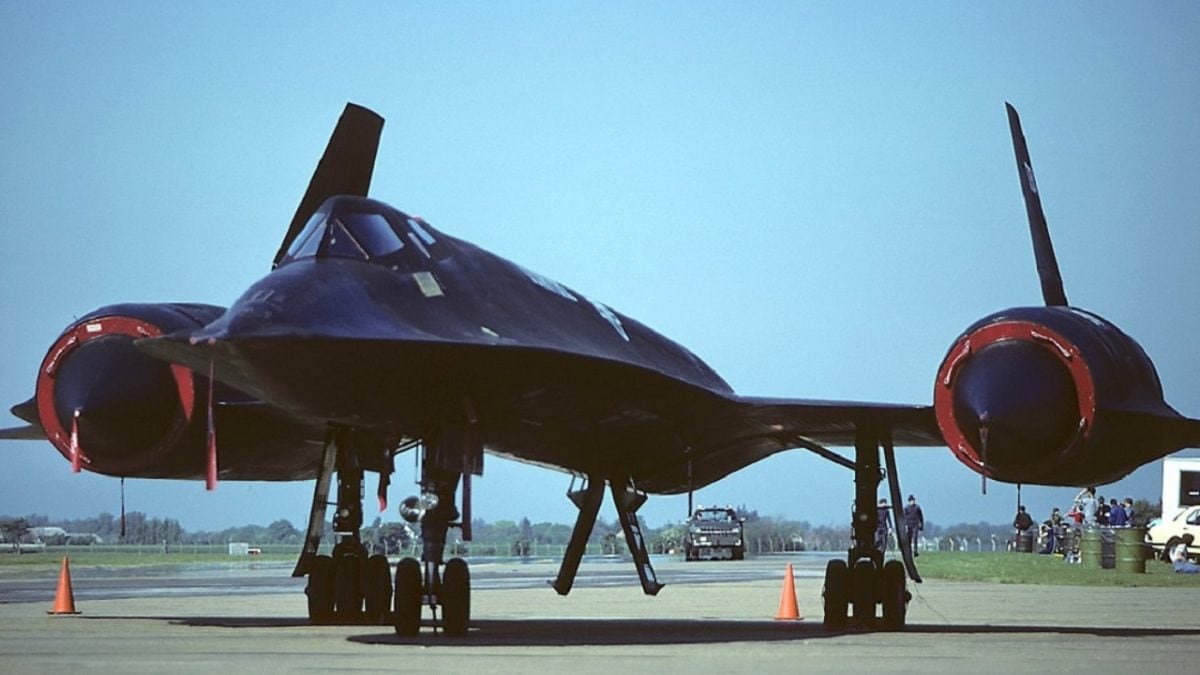The SR-71 was truly an amazing spy plane that broke speed record after speed record. But all that speed cost a heck of a lot of money. Even though the plane was a game-changer during the Cold War, eventually, the costs were too much given the pace of technological change: The SR-71 Blackbird was a long-range reconnaissance plane with remarkable performance characteristics: Mach 3 speed, and 85,000 service ceiling, and an 11,820 foot per minute rate of climb. The SR-71 was so fast that to evade surface-to-air missiles, the jet would simply accelerate to outrun missiles. But the SR-71 was also remarkably expensive to operate – which is why after the Cold War ended, Congress axed the Blackbird spy plane.

Specialized and Distinct Components
Every last component of the Blackbird was specialized and distinct; the jet needed to do things no other jet could do. As a result, the SR-71 shared roughly zero commonality with any other airframe. So, building, operating, and maintaining the plane also required specialized and distinct components. That’s expensive – and logistically complicated.
For example, the SR-71 required specialized fuel. Whereas most U.S. military jets were content to guzzle JP-4 or later JP-8, the standard fuel grade for U.S. and NATO forces, the SR-71 needed a fuel that could handle the high temperatures generated at Mach 3. Essentially, JP-8 would have blown up if it was used in the SR-71, forcing the development of an alternative. Pratt & Whitney developed the alternative, JP-7, with an ultra-low flash-point and high thermal stability.
Allegedly, JP-7’s volatility was so low that you could flick a lit match into the fuel without causing an explosion. JP-7 was so hard to ignite that more specialized equipment and procedures were required just to initiate the SR-71’s engine combustion. Because the JP-7 wouldn’t ignite, Lockheed had to develop a complex engine starting method; triethylborane (TEB) was injected into the SR-71’s engine, which of course, further increased the jet’s complexity and costs.
Refueling In Mid-Flight
Further increasing operation complexity and costs: the KC-135 tanker, which the Air Force fleet could rely on for refueling, needed to be modified to carry JP-7; the Air Force needed to build a new tanker, the KC-135Q, just to refuel the SR-71 in-flight. And the SR-71 needed in-flight refueling; the jet burned between 36,000 and 44,000 pounds of JP-7 per hour. If the SR-71 had not been able to refuel in-flight, the plane would have been limited to an operating range of just 3,000 miles – not very practical for a reconnaissance spy plane. No, the SR-71 needed to refuel every 90 minutes, so the Air Force ordered a fleet of 56 KC-135Qs (to support just 32 SR-71s)
It wasn’t just about the fuel. As I said, the SR-71 needed specialized everything.
Part Specific
The SR-71 needed special tires. The jet was so heavy (170,000 pounds) that standard tires couldn’t handle the weight. So, BF Goodrich came in and designed custom-built aluminum-reinforced tires that could support the landing of an 85-ton aircraft. Still, the aluminum tires only had a 20-landing lifespan.
The SR-71 needed specialized cockpit windows. Traveling at Mach 3 caused the cockpit windows to reach temperatures of 600 degrees Fahrenheit. At 600 degrees, standard glass windows would have warped and distorted the pilot’s vision, so two-inch quartz windows were designed and installed.
SR-71 pilots needed a specialized flight suit. Adapted from NASA’s Gemini space suits, David Clark High Altitude Pressure Suits were standard issue amongst SR-71 crews. The suits were required for survival; above 63,000 feet altitude, the atmospheric pressure becomes so low that body fluids can boil at your body’s own temperature of 98 degrees. The SR-71 suits prevented the crew’s blood from boiling.

Image is of an SR-71 Spy Plane. Image Credit: Creative Commons.

Image of SR-71 Spy Plane. Image Credit: Creative Commons.
In all, the Blackbird cost about $200,000 per hour to operate – the fuel alone cost $18,000 per hour). Per year, the SR-71 cost between $200 and $300 million. As the Cold War ended, and as satellite technology advanced to the point where the SR-71’s reconnaissance abilities had become redundant, the costs were no longer justifiable. Not only was the Blackbird mothballed, but the plane’s impressive logistical and support apparatuses were mothballed, too.
Harrison Kass is the Senior Defense Editor at 19FortyFive. An attorney, pilot, guitarist, and minor pro hockey player, he joined the US Air Force as a Pilot Trainee but was medically discharged. Harrison has degrees from Lake Forest College, the University of Oregon, and New York University. He lives in Oregon and listens to Dokken.





